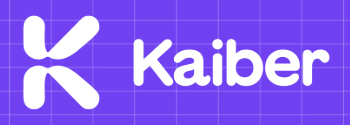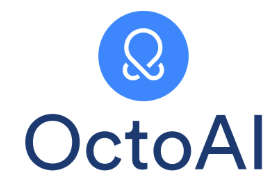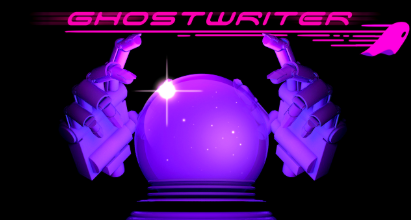Are you struggling to create engaging video content that stands out in today's saturated digital landscape? Traditional video editing requires extensive technical skills, expensive software, and countless hours of manual work. Content creators, marketers, and artists desperately need efficient solutions to transform their creative visions into stunning visual narratives. This comprehensive guide explores how Kaiber.ai revolutionizes video creation through cutting-edge artificial intelligence technology.

What Makes Kaiber Stand Out Among AI Tools
Kaiber.ai represents a breakthrough in artificial intelligence video generation, offering unprecedented creative control through its sophisticated platform. Unlike conventional video editing software, this innovative AI tool transforms static images and existing videos into dynamic, artistic animations using simple text descriptions.
The platform's neural networks analyze visual elements, artistic styles, and motion patterns to generate unique video content. Users upload source materials, provide detailed text prompts, and watch as advanced algorithms create mesmerizing visual transformations that would typically require professional animation teams.
Core Features of Kaiber's AI Tools Platform
Video-to-Video Transformation Technology
Kaiber's signature feature enables users to reimagine existing footage through AI-powered style transfers. The platform analyzes frame composition, movement patterns, and visual elements to apply artistic interpretations while maintaining original motion dynamics.
This technology processes various input formats including MP4, MOV, and AVI files. The AI tools examine temporal consistency, ensuring smooth transitions between frames while applying stylistic modifications based on user prompts.
Image-to-Video Animation Capabilities
Static images gain life through Kaiber's sophisticated animation algorithms. Users upload photographs, illustrations, or digital artwork, then describe desired movements and atmospheric changes through text inputs.
The platform's AI tools generate camera movements, particle effects, and environmental animations that transform still images into captivating video sequences. This feature particularly benefits social media creators seeking dynamic content from limited source materials.
Comprehensive Comparison: Kaiber vs. Competing AI Tools
| Feature | Kaiber | RunwayML | Stable Video | Pika Labs |
|---|---|---|---|---|
| Video-to-Video | ? Advanced | ? Basic | ? Limited | ? Standard |
| Image Animation | ? Excellent | ? Good | ? Basic | ? Good |
| Style Variety | 50+ Styles | 20+ Styles | 10+ Styles | 30+ Styles |
| Max Duration | 16 seconds | 4 seconds | 4 seconds | 3 seconds |
| Resolution | Up to 1080p | Up to 720p | Up to 512p | Up to 720p |
| Pricing (Monthly) | $15-60 | $12-76 | $20-50 | $10-70 |
Advanced AI Tools Integration and Workflow
Kaiber's ecosystem connects seamlessly with popular creative applications. Users can import projects from Adobe After Effects, export to Premiere Pro, and integrate with social media management platforms.
The platform's API allows developers to incorporate video generation capabilities into existing applications. This flexibility makes Kaiber valuable for agencies, educational institutions, and enterprise clients requiring scalable content production.
Professional Use Cases for Kaiber AI Tools
Marketing teams leverage Kaiber's capabilities for product demonstrations, brand storytelling, and social media campaigns. The platform's artistic styles help brands differentiate their visual identity while maintaining consistent messaging across multiple channels.
Educational content creators use these AI tools to transform complex concepts into engaging visual explanations. Scientific illustrations, historical recreations, and abstract concept visualizations become accessible through Kaiber's animation capabilities.
Technical Specifications and Performance Metrics
Kaiber's infrastructure processes millions of frames monthly through distributed computing networks. The platform utilizes NVIDIA A100 GPUs for optimal rendering performance, ensuring consistent quality across varying complexity levels.
Processing times vary based on input resolution, style complexity, and desired output length. Standard 4-second videos typically render within 2-5 minutes, while longer sequences may require 10-15 minutes for completion.
Quality Assessment and Output Standards
Generated videos maintain temporal coherence through advanced frame interpolation algorithms. The AI tools analyze motion vectors, depth information, and style consistency to produce professional-grade results suitable for commercial applications.
Color accuracy, detail preservation, and artistic interpretation balance ensure outputs meet industry standards for digital marketing, entertainment, and educational content distribution.
Getting Started with Kaiber's AI Tools
New users begin with Kaiber's intuitive onboarding process, featuring guided tutorials and sample projects. The platform provides preset styles, prompt templates, and community-generated examples to accelerate learning curves.
Account setup requires email verification and payment method selection. Free trials offer limited processing credits, allowing users to explore capabilities before committing to subscription plans.
Optimization Strategies for Best Results
Successful Kaiber projects start with high-quality source materials. Images should feature clear subjects, appropriate lighting, and sufficient resolution for desired output quality. Video inputs benefit from stable footage, consistent lighting, and minimal compression artifacts.
Text prompts require specific, descriptive language focusing on visual elements, artistic styles, and desired atmospheres. Effective prompts combine artistic references, color palettes, and movement descriptions for optimal AI interpretation.
Future Developments in AI Tools Technology
Kaiber's development roadmap includes enhanced resolution support, extended video durations, and improved style consistency. Upcoming features focus on collaborative editing, batch processing, and advanced motion control capabilities.
The platform continues expanding its AI tools through machine learning improvements, user feedback integration, and partnership developments with creative software providers.
Frequently Asked Questions
Q: How do AI tools like Kaiber compare to traditional video editing software?A: AI tools automate complex processes that traditionally require manual keyframing, rotoscoping, and effects application. While traditional software offers precise control, AI tools provide rapid creative exploration and style application.
Q: What file formats do Kaiber's AI tools support for input and output?A: Kaiber accepts MP4, MOV, AVI, JPEG, PNG, and GIF formats for input. Output formats include MP4 and MOV with various resolution and quality settings.
Q: Can businesses integrate Kaiber's AI tools into existing workflows?A: Yes, Kaiber offers API access, batch processing capabilities, and integration options for enterprise clients requiring scalable video generation solutions.
Q: How do AI tools handle copyright and intellectual property concerns?A: Users retain ownership of generated content created from their source materials. Kaiber's AI tools process user inputs without storing or redistributing original content.
Q: What technical requirements are needed to use Kaiber's AI tools effectively?A: Kaiber operates through web browsers, requiring stable internet connections and modern browser versions. No specialized hardware or software installations are necessary.








